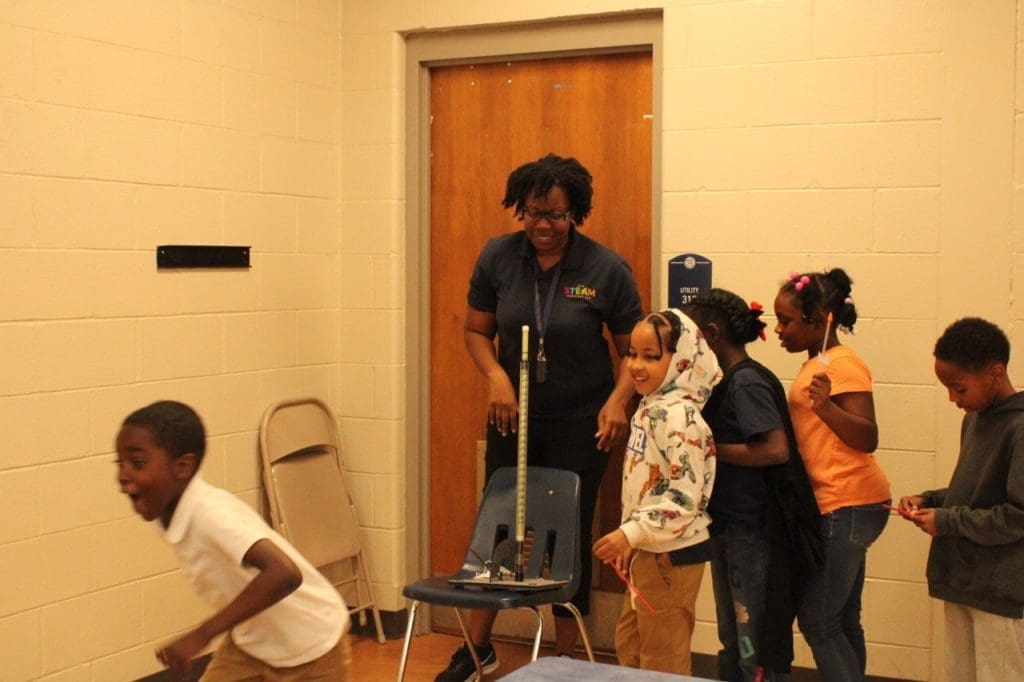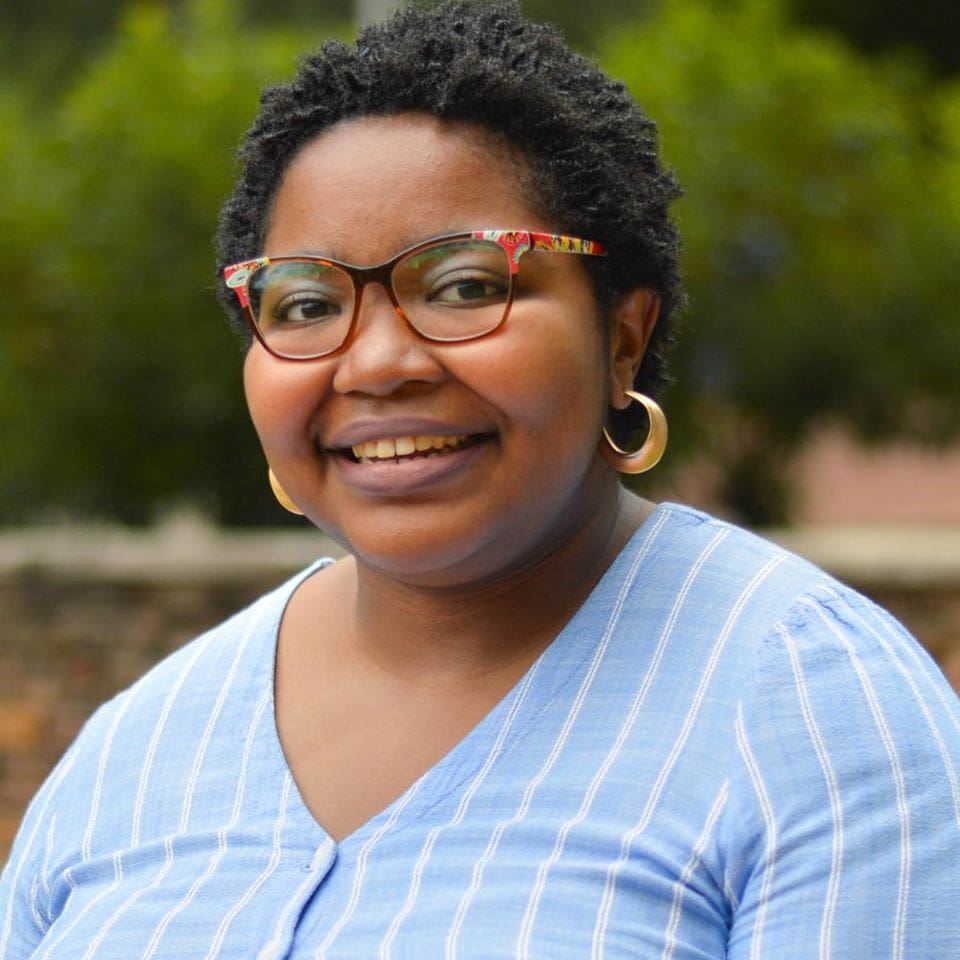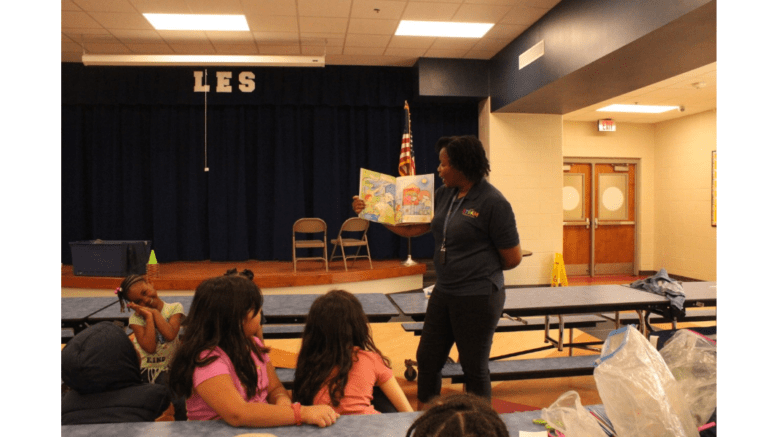By Arielle Robinson
Monday afternoon, Lockheed Elementary School students in grades K-2 designed, built, and tested rockets during an afterschool program at the Marietta school in which the children learn skills in science, technology, engineering, art, and math.
Maureen Myrie has a background in IT and in 2013 founded The STEAM Generation.
Many people may be familiar with STEM programs, which is science, technology, engineering, and math.
The STEAM Generation expands on this, enhancing students’ motor and literacy skills as well as providing them access to science, technology, engineering, art, and math — hence the name of the organization.
“We incorporate the ‘A’ and that is for art integration,” Myrie said. “I can’t teach STEM without art…the art element is incorporated into the design, which is a part of the engineering design process. The children have to be able to articulate what they’re envisioning in their buildings. In order to do that, they have to express themselves through art.”
The STEAM Generation, a nonprofit, aims to serve children from socioeconomically disadvantaged backgrounds.
They work with children aged 4-14 and do classes, camps, workshops, and partner with other schools and nonprofits in the metro Atlanta area. They also have virtual classes in light of the pandemic.
Myrie serves kids in 22 states around the U.S. and in parts of Canada.
“We’re targeting schools that are Title I schools,” Myrie said. “We serve everyone, but all our funding goes to schools who have a high free and reduced lunch population, like Lockheed. We’re here to provide these opportunities to children who would not be able to afford it otherwise.”
Myrie started Monday’s program off by reading “The Rooftop Rocket Party” by Roland Chambers. The book is about a boy who loves rockets and space travel.
Afterward, the children, under Myrie’s guidance, began designing their rockets on paper.
Myrie first instructed the children to draw a rectangle. This is what she called the fuselage, which is the rocket’s main body.
The kids then proceeded to draw the fins and the nose cone of the rocket. Each student added their own touch to their drawing, coloring them in shades they saw fit and some adding rocket fire.
After the design portion, the students began building their own rockets. The fuselage in this case was a straw.
“What are my two rules [about the straws]?” Myrie asked the children.
“Don’t bend the straw, don’t blow into the straw,” kids said in unison.
The STEAM students cut out two wings they drew onto an index card and taped them to the straw. They used clay to act as the nose cone, putting it on top of the rocket.
Once these steps were complete, the children lined up to launch their rockets in an air-powered rocket launcher. The aim was to see whose rocket could fly the farthest.
After each kid launched their rocket once, Myrie instructed the kids to take the very tip of their clay nose cones off to see if that would propel their rockets further, which it did.
When asked why that happened, Myrie said “The lighter the nose cone, the farther the rocket goes. So I’m teaching them about how weight impacts the rocket and the performance of a rocket.”

The kids cheered and watched in awe as their self-designed rockets flew across the cafeteria. Some ran back in line, eager to be able to do it again. They would show off their rockets to their peers.
Myrie said that since the kids had to stay after school anyway, they might as well engage in academic enrichment programs.
For various reasons, some related to social class, some children may not know basic skills that they would have been taught in pre-K. This puts them behind other children when they get to elementary school.
For example, a few of the older children did not know how to cut properly.
“Our goal is to bridge the gap because the school can’t do everything,” Myrie said. “We use the out of school time enrichment … to continue the learning … Think about COVID, these kids may have been impacted by COVID. Learning loss is still real and it just got exacerbated by COVID.”
Myrie said that The STEAM Generation focuses on problem solving, critical thinking, and peer collaboration. The program is supplementary to school learning.

The Rotary Club of Marietta sponsors and funds The STEAM Generation at Lockheed for this school year. The specific program at Lockheed began six weeks ago and is held every Monday after school.
Normally, around 30 children are in the program.
This week the program focused on aerospace engineering and next week, they will shift to civil engineering, which will close out the school year.
Myrie said The STEAM Generation’s programs are driven by funding. They will have to secure funding to do the program for the next school year.
“We’re in need of funding to continue to support the program here for the next school year,” Myrie said. “We’re in need of support from individuals and companies.”
To learn more about The STEAM Generation, please visit its website linked here.

Arielle Robinson is a student at Kennesaw State University. She also freelances for the Atlanta-Journal Constitution and is the former president of KSU’s chapter of the Society of Professional Journalists as well as a former CNN intern. She enjoys music, reading, and live shows.
